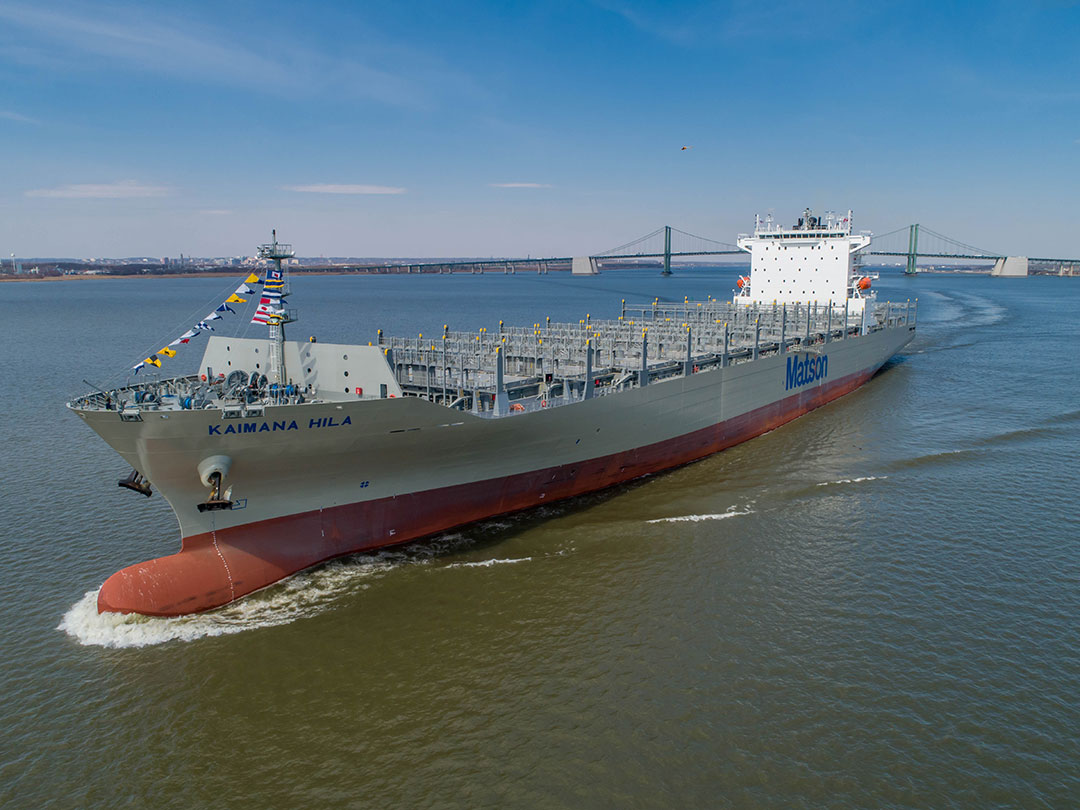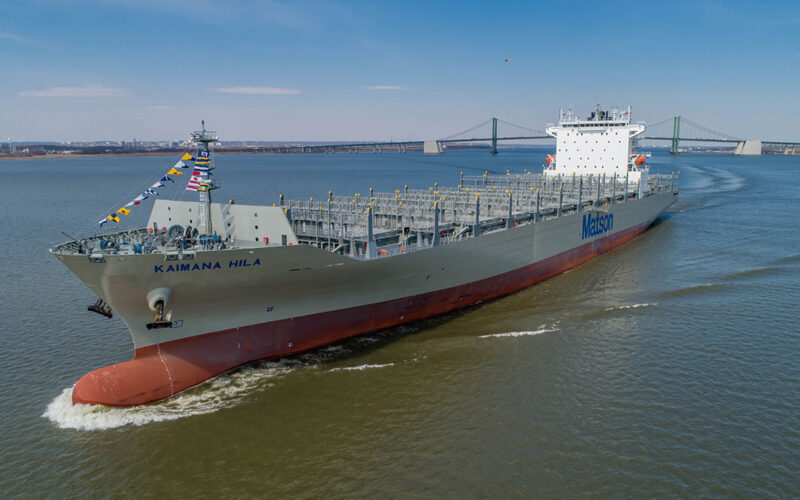
Matson Navigation Company has confirmed that it will convert the main engine aboard its containership Kaimana Hila from an MAN B&W S90ME-C10.5 unit to a dual-fuel ME-GI unit capable of running on liquefied natural gas (LNG).
In doing so, it is exercising an option contained in a contract it signed with MAN Energy Solutions in June 2022 to perform an identical conversion on a sister ship, Daniel K. Inouye. The Kaimana Hila was built in 2019 and MAN Energy Solutions’ after-sales division, MAN PrimeServ, will perform the 3,600 teu vessel’s retrofit.
Klaus Rasmussen, Head of Projects and PVU Sales, MAN PrimeServ, said, “This order is the latest example in an increasing trend of owners choosing dual-fuel retrofits for their existing vessels in service to achieve fleet-transformation goals while simultaneously gaining benefits in terms of upcoming regulations such as CII and EEXI. Retrofitting a MAN B&W engine to dual-fuel running is straightforward as our standard, electronically-controlled diesel engines are constructed as ‘dual-fuel ready’ and therefore readily retrofittable.
Such retrofits offer a viable pathway to shipowners that wish to achieve a net-zero carbon footprint by 2050.
Capt. Jack Sullivan, Matson’s Senior Vice President, Vessel Operations & Engineering, said, “This will be the third vessel Matson is retrofitting with dual-fuel LNG capability. Each retrofit is a meaningful step toward achieving our corporate sustainability goals to achieve a 40 percent reduction in Scope 1 greenhouse gas fleet emissions by 2030 and net-zero Scope 1 GHG emissions by 2050.”
The ocean transportation and logistics business segments for Hawaii-based shipping company Matson performed well despite being down from the high-level pandemic-driven demand of the last two years, company Chairman and Chief Executive Officer Matt Cox said on April 19.
“Within ocean transportation, our China service generated lower year-over-year volume and freight rates, which were the primary contributors to the year-over-year decline in our consolidated operating income,” he said. In the first quarter, retail consumers managed their inventories more conservatively in the backdrop of weakening consumer demand, rising interest rates and economic uncertainty, he added.
“As such, we expect our CLX (China-Long Beach Express) and CLX+ services in the second quarter to reflect freight demand levels below normalized conditions with lower year-over-year volumes and rates,” Cox said. “Absent an economic ‘hard landing’ in the U.S., we continue to expect improved trade dynamics in the second half of 2023 as the Transpacific marketplace transitions to a more normalized level of demand.”

